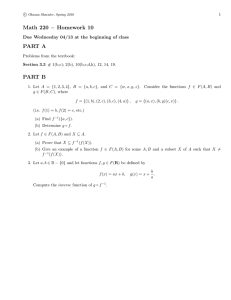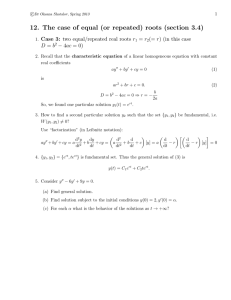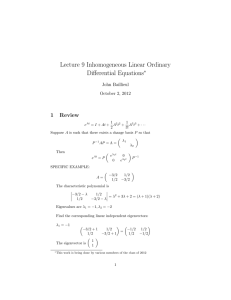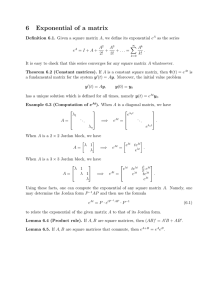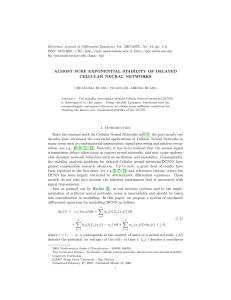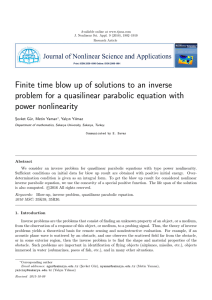Document 10583138
advertisement
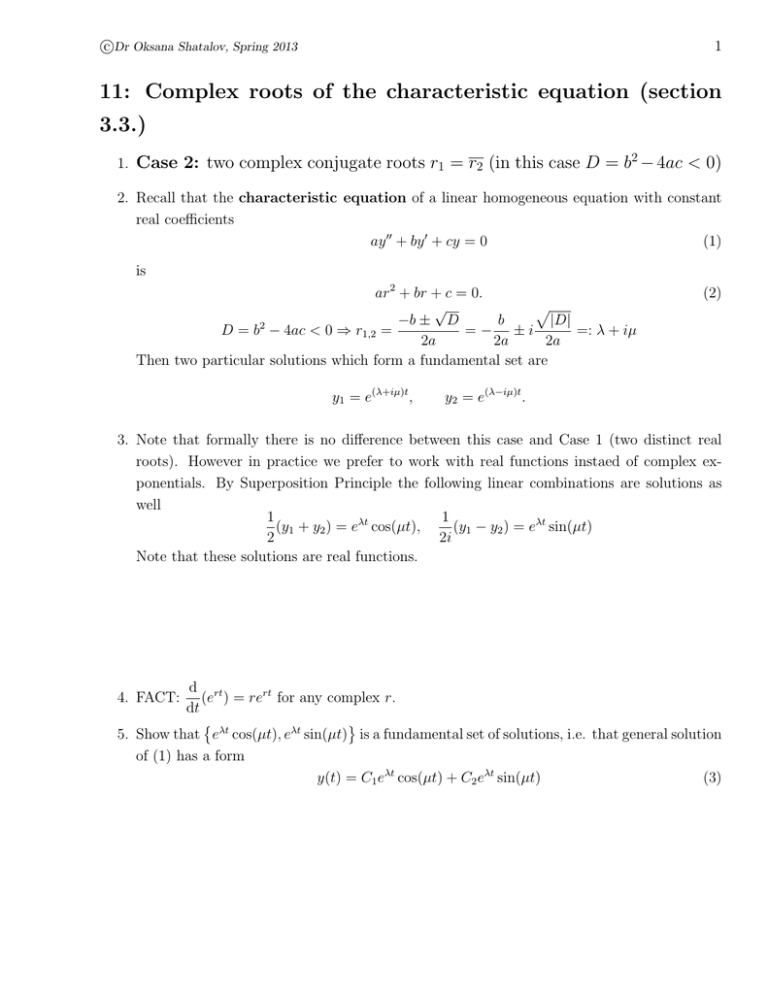
c Dr Oksana Shatalov, Spring 2013 1 11: Complex roots of the characteristic equation (section 3.3.) 1. Case 2: two complex conjugate roots r1 = r2 (in this case D = b2 − 4ac < 0) 2. Recall that the characteristic equation of a linear homogeneous equation with constant real coefficients ay 00 + by 0 + cy = 0 (1) is ar2 + br + c = 0. p √ |D| b −b ± D 2 =− ±i =: λ + iµ D = b − 4ac < 0 ⇒ r1,2 = 2a 2a 2a Then two particular solutions which form a fundamental set are y1 = e(λ+iµ)t , (2) y2 = e(λ−iµ)t . 3. Note that formally there is no difference between this case and Case 1 (two distinct real roots). However in practice we prefer to work with real functions instaed of complex exponentials. By Superposition Principle the following linear combinations are solutions as well 1 1 (y1 + y2 ) = eλt cos(µt), (y1 − y2 ) = eλt sin(µt) 2 2i Note that these solutions are real functions. d rt (e ) = rert for any complex r. dt 5. Show that eλt cos(µt), eλt sin(µt) is a fundamental set of solutions, i.e. that general solution of (1) has a form y(t) = C1 eλt cos(µt) + C2 eλt sin(µt) (3) 4. FACT: c Dr Oksana Shatalov, Spring 2013 2 6. Solve the following two differential equations which are important in applied mathematics: y 00 + ω 2 y = 0 and y 00 − ω 2 y = 0, where ω is a real positive constant. 7. Alternative form of solution (3): y(t) = eλt R cos(µt − δ), (4) where R= q C12 + C22 , C1 C1 cos δ = p 2 = , R C1 + C22 C2 C2 sin δ = p 2 = . R C1 + C22 Note that tan δ = C2 /C1 . 8. Application: Mechanical unforced vibration: a mass hanging from a spring (more details in Section 3.7 ). • λ = 0 corresponds to undamped free vibration (simple harmonic motion) • λ < 0 corresponds to damped free vibration • R is called the amplitude of the motion c Dr Oksana Shatalov, Spring 2013 3 • δ is called the phase, or phase angle, and measures the displacement of the wave from its normal position corresponding to δ = 0. 2π is the period of the motion. • T = µ 9. Consider y 00 + 2y 0 + 3y = 0. (5) (a) Find general solution. (b) Find solution of (5) subject to the initial conditions y(0) = 2, y 0 (0) = 1. (c) Sketch the graph of the solution of IVP from (b) and describe its behavior as t increases.
